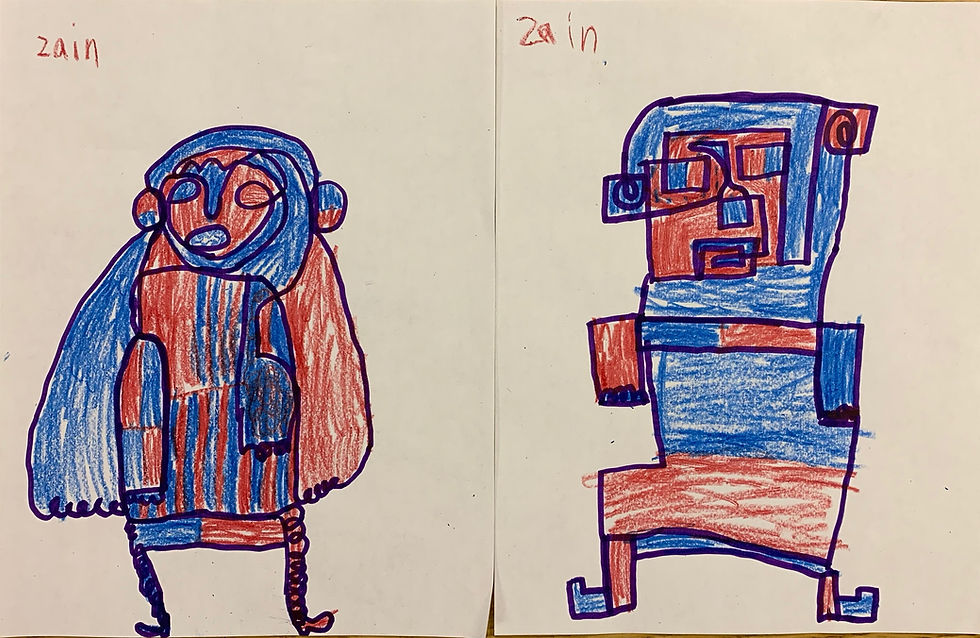Build a Buddy
- Shannon Gerrity

- Mar 16, 2020
- 3 min read
Updated: May 29, 2020
Stretch your eye and hand coordination, productively play, and practice line with Continuous line drawings!
Art making episode, song and mini lesson for KTVU's SF Loves Learning television show below!
Line is one of the seven elements of art, and quite possibly the most essential building block of them all.
Artists play with line to understand boundaries, to build their skillset, and to show their unique self. Because remember: all impactful art comes from our authentic self.
Continuous line drawings are abstract and one-of-a-kind; it's impossible to replicate (like humans...and art!).
Before You Begin:
Remember that art is ish, it's human, and whatever comes from you is what it's meant to be. There's no such thing as "good" or "bad," "right" or "wrong" in art, so get making!
When The Piece Feels Finished:
While art is never finished (it's alive and living!), share your art when you feel that it is grounded and whole - when you feel you have given it your full attention and care. You can share your art by hanging it on a wall in your house, posting it on-line, or mailing it to someone you love.
Scroll down to see examples, extending ideas, and making steps!
Family is Love as seen on KTVU's SF Loves Learning television show:
Build A Buddy art making episode:
A Note:
There are many ways to create continuous line drawings.
One of my favorites are blind contour drawings.
(Try out blind contour drawings to extend beyond the Build A Buddy art making!)
Steps to Build A Buddy, Continuous Line Drawing:
1. Yell: "5, 4, 3, 2, 1, Make Art!" (This transitions your brain; there's research about this!)
2. Collect three or more pieces of paper (or cardboard, or paper plates, or a dry erase board).
3. Choose three (and only three!) writing utensils (markers/sharpies/highlighters move easily on the page).
4. Make a continuous line drawing of a face without picking up your writing utensil. Think Picasso. Be Picasso. Human art is messy; that's why it resonates. But don't pick up your writing utensil until the end!
5. Add designs with the other two utensils (dotted lines, broken lines, wavy lines, zig zag lines, fancy free lines).
6. Create a series of three or more faces to see the iteration of your process.
7. Name your faces, your characters, your buddies. Or, find a way to incorporate your own name.
8. When your series feels grounded and whole, and you've given it your attention and care, introduce your buddies to your friends and family. Ask them to build their own buddies and share them with you.
9. Spend some time seeing your series:
What commonalities do you see in your series? (Both buddies feel like they have similar personalities. Both buddies have similar stances.)
What do you see in the art piece? (I see movement in the crayon strokes; there's also texture. I see how the continuous line creates different shapes within the buddy.)
What does this art piece remind you of? (This piece reminds me of imaginary worlds where different characters in the forest come to life. This piece also reminds me of cartoons.
How might this art piece live in the world? (I think this would be fun to turn into a comic or a greeting card and mail to a friend.)
10. After you create a series of three or more faces, try other objects or beings.
Play with constraints:
use your non-dominant hand to draw the long line
change the number of colors you use
create a collaborative piece with someone else, taking turns filling in the empty areas and/or drawing different parts of the object or being
set a timer and only make for a specific amount of time
And, voilà: you've made continuous line drawing art!












Comments